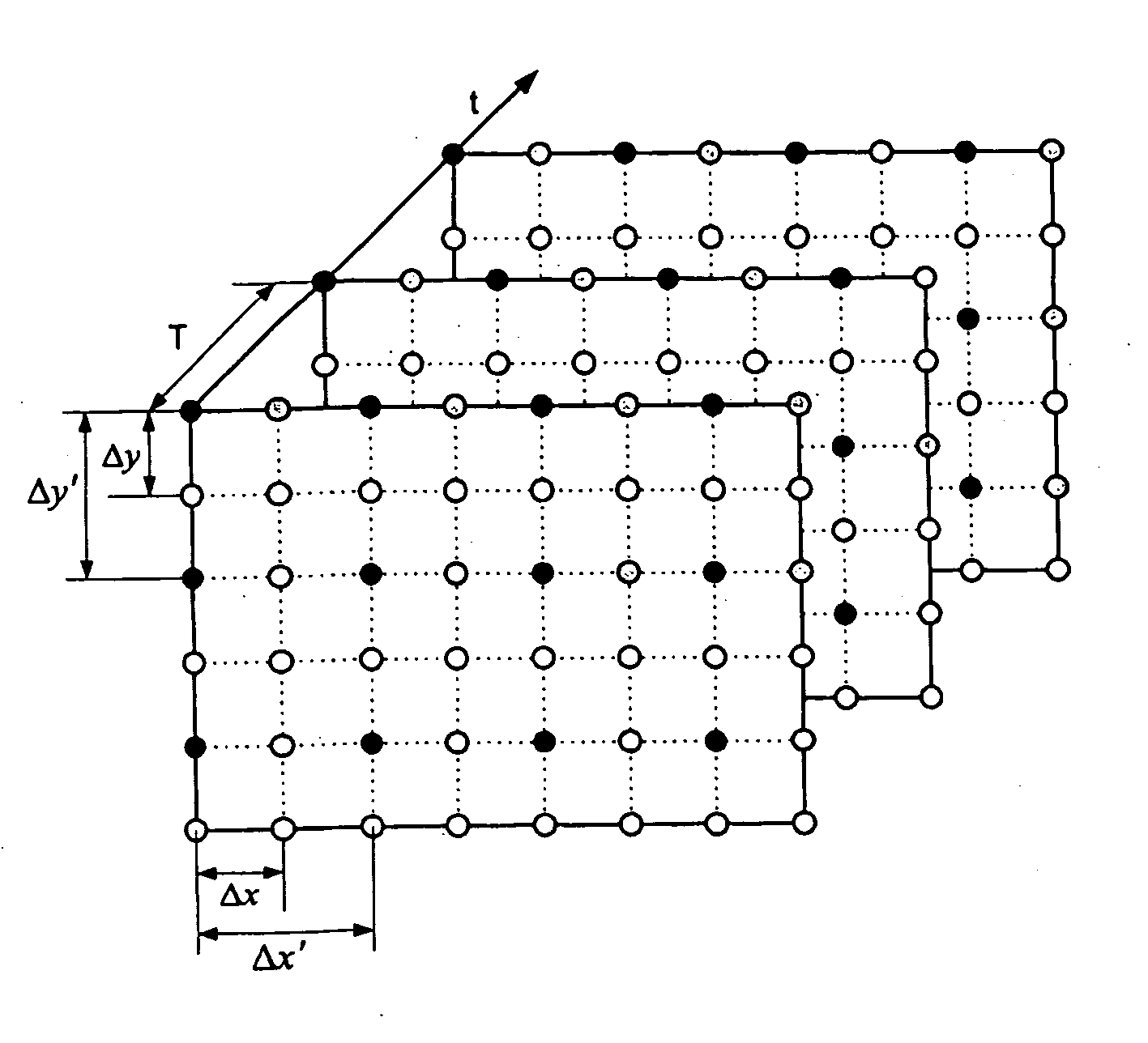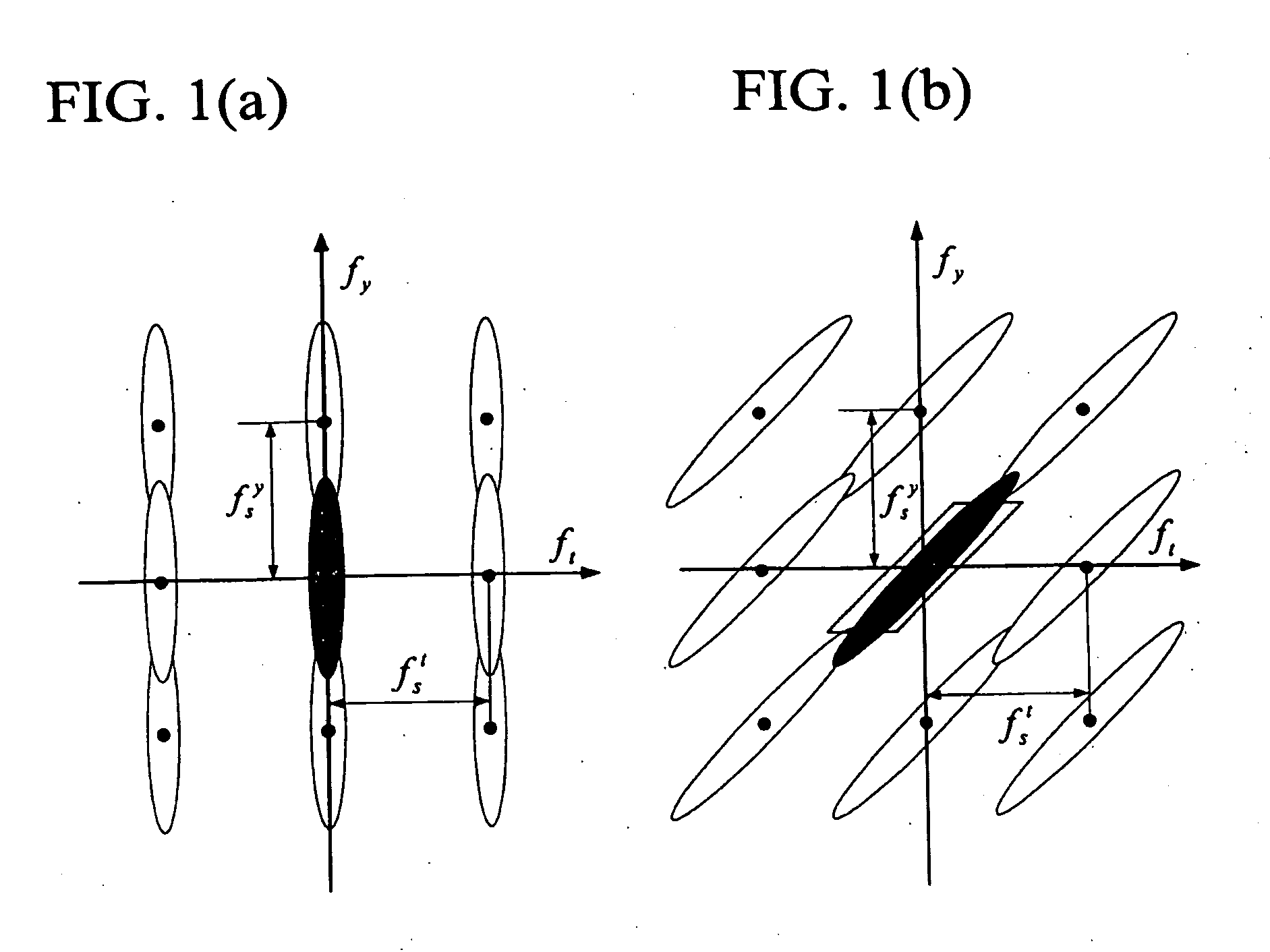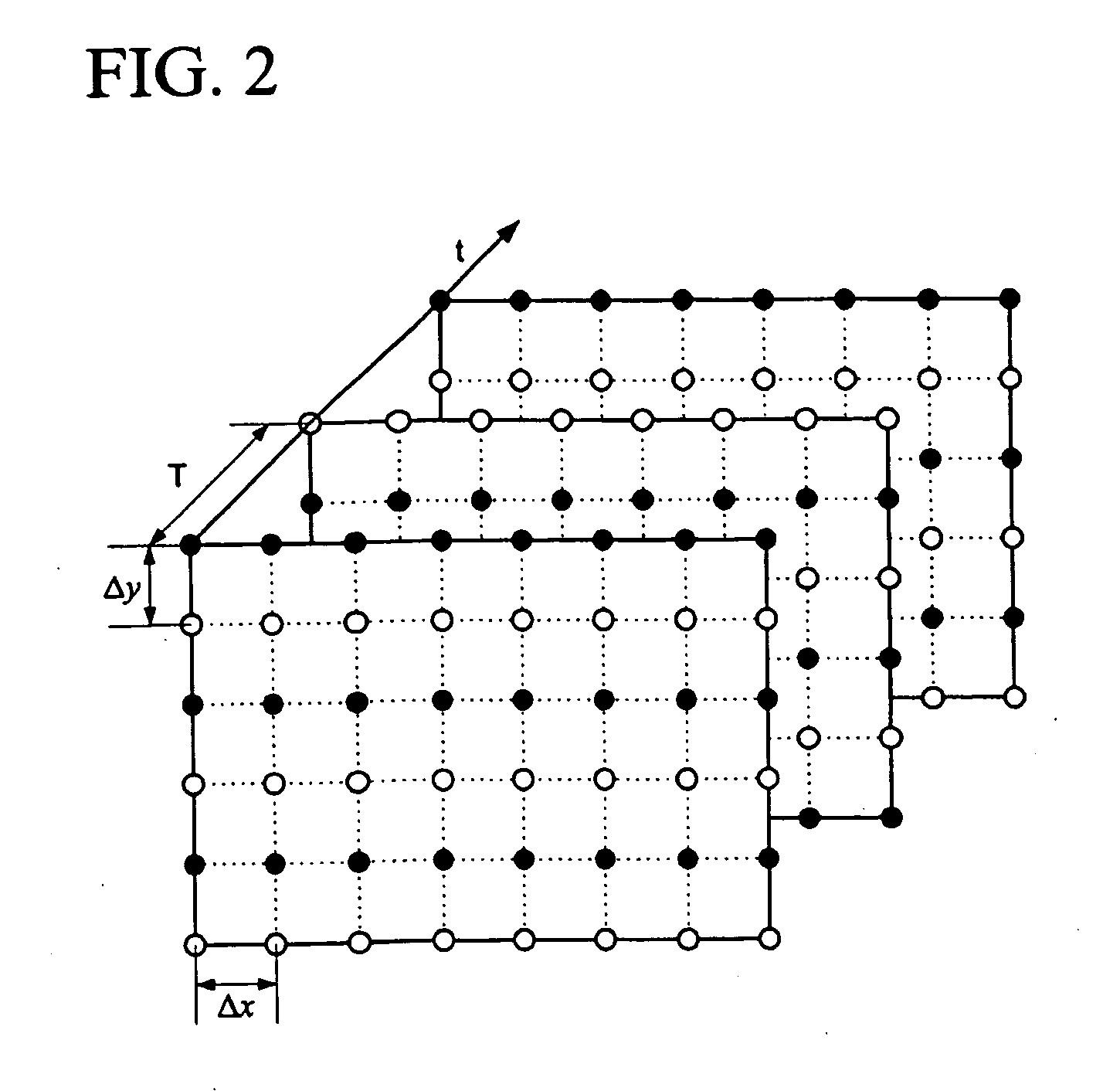Motion compensated video spatial up-conversion
a motion compensation and video technology, applied in the field of video processing, can solve the problems of blurring or over-smoothness of artifacts, not the case for progressively scanned videos, and extremely difficult and expensive to realiz
- Summary
- Abstract
- Description
- Claims
- Application Information
AI Technical Summary
Benefits of technology
Problems solved by technology
Method used
Image
Examples
Embodiment Construction
[0024] In the present invention, the close connection between video spatial up-conversion and video deinterlacing is addressed. This is significant because, once the resemblance between these two aspects of video format conversion (VFC) is clarified, the success in the area of video deinterlacing can be directly migrated to the area of video spatial up-conversion. In particular, motion compensated video up-conversion techniques can be easily developed by extending the respective motion compensated video deinterlacing algorithms.
[0025] A unique and significant characteristic of video signals is motion. Considering the correlation along the motion trajectory in the task of video spatial resolution enhancement is beneficial. Motion compensated video spatial up-conversion techniques, however, is even more advantageous than the consideration of such a correlation without using temporal correlations in constructing a spatial resolution enhanced video with a superior quality. This fact is...
PUM
 Login to View More
Login to View More Abstract
Description
Claims
Application Information
 Login to View More
Login to View More - R&D
- Intellectual Property
- Life Sciences
- Materials
- Tech Scout
- Unparalleled Data Quality
- Higher Quality Content
- 60% Fewer Hallucinations
Browse by: Latest US Patents, China's latest patents, Technical Efficacy Thesaurus, Application Domain, Technology Topic, Popular Technical Reports.
© 2025 PatSnap. All rights reserved.Legal|Privacy policy|Modern Slavery Act Transparency Statement|Sitemap|About US| Contact US: help@patsnap.com



